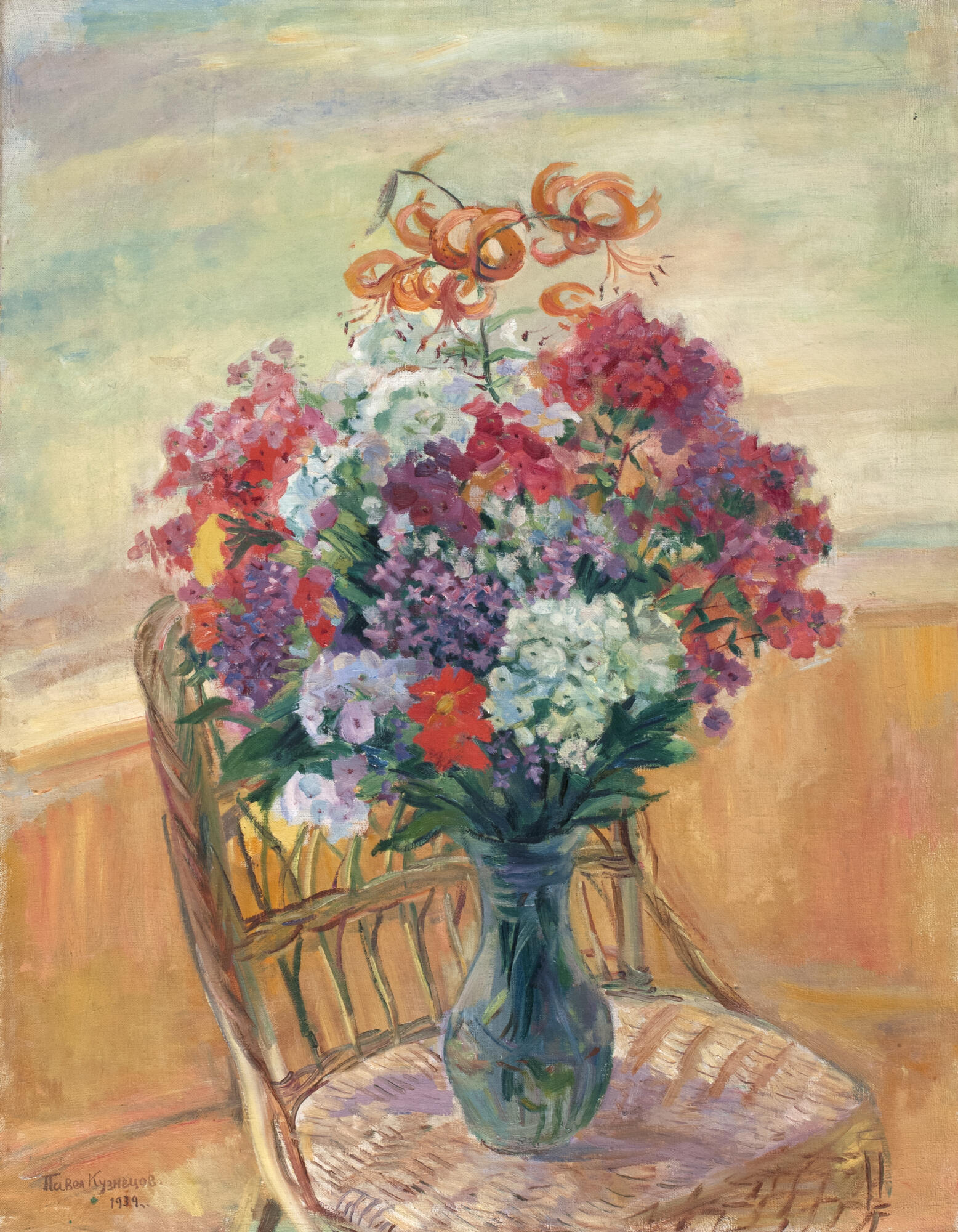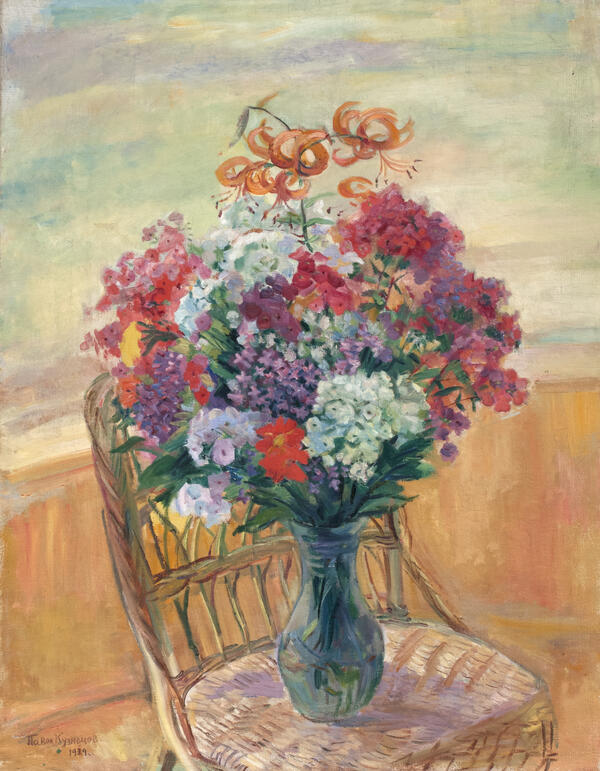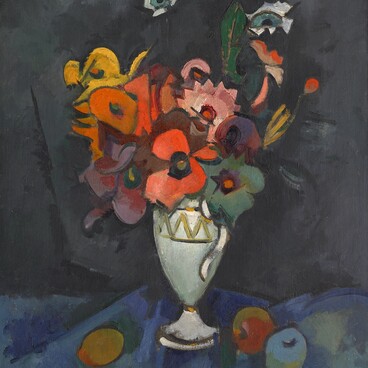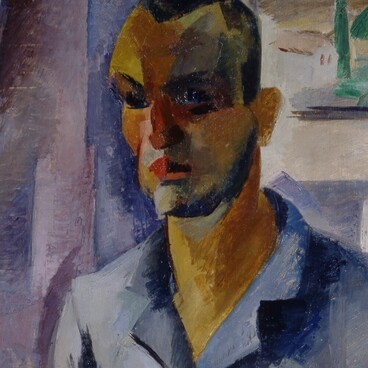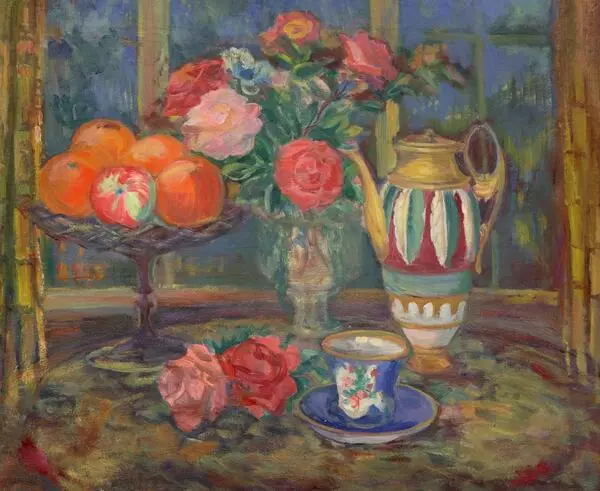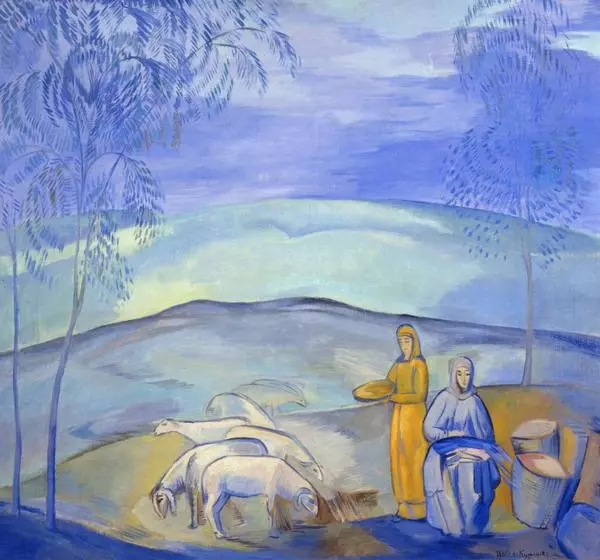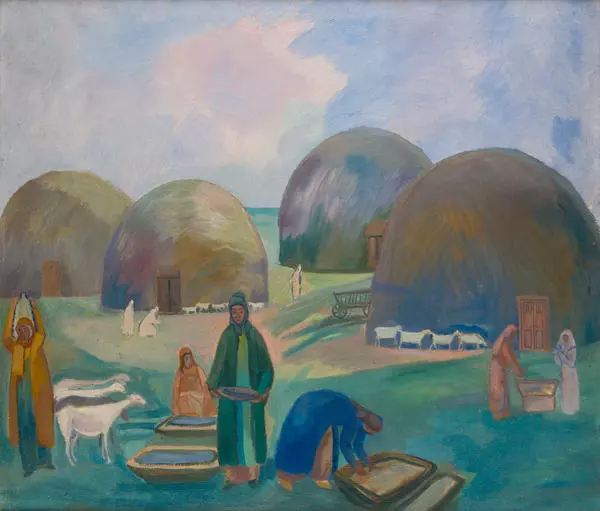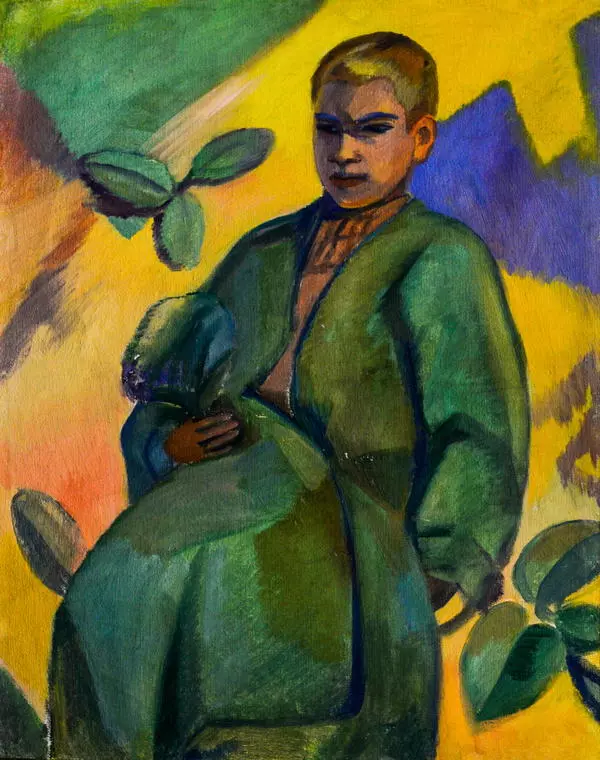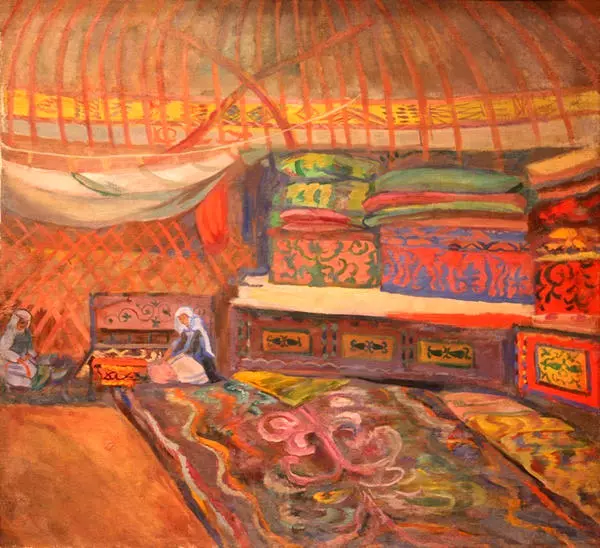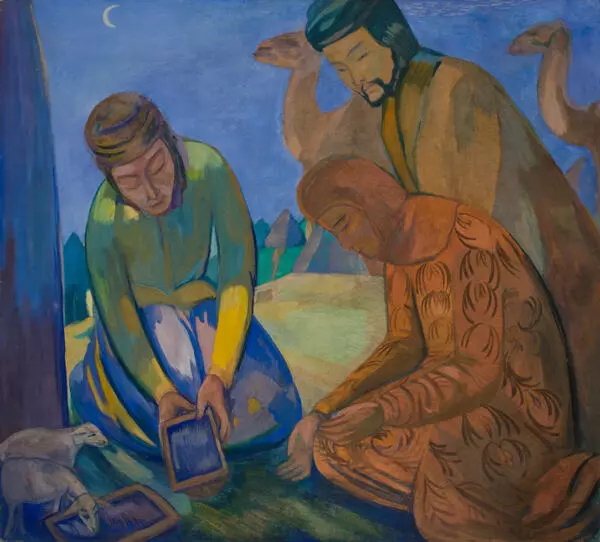Pavel Kuznetsov (1878-1968) first honed his artistic skills in Saratov, in his father’s studio - the “master of painting”, Varfolomey Kuznetsov. He then studied at the Studio of Painting and Drawing at the Saratov Society of Fine Arts Lovers with Vasiliy Konovalov, who was a graduate of the Saint Petersburg Academy of Arts and the best teacher in Saratov; he also studied with Hector Salvini-Baracchi, who was an Italian by origin who had remained in the Volga area to live and work. One exceptionally important event in his life was when he met.
Viktor Borisov-Musatov, who had a strong and beneficial influence on the younger generation of Saratov artists. Continuing his education at the Moscow School of Painting, Sculpture, and Architecture, the young man visited the private studio of Konstantin Korovin, where he was involved in plein air painting together with Serov, Polenov, and Tarkhov.
One of the greatest masters of the 20th century, Kuznetsov came into being as an artist at the turn of the century. A painter, graphic artist, theater set decorator, landscape painter, portraitist, and author of monumental decorative panels, still lifes, compositions of a symbolistic nature, and series of works with Oriental themes - this is the far from complete range for his work. As a teacher at a number of well-known Moscow art institutes and workshops at the Department of Fine Arts in Saratov, Kuznetsov influenced a whole galaxy of artists in the 20th century. He was perceived not only as an extremely great painter, but also as the author of the so-called “theory of color tone”, which found its full-fledged embodiment in the artist’s painting practices.
Over the course of a long life, the features in his works changed, acquiring new particularities, turning to new narratives and themes. The work Flowers appeared in 1939, when Kuznetsov, as he said, turned to the variety that surrounded his life: ‘From industry to painting portraits, from gardening to floriculture, from the processes involved in working on the collective farm to celebrations of the harvest…’. A certain role in his passion for depicting flowers during this period was played by the fact that in 1935 the Kuznetsov family acquired a small house 42 kilometers from Moscow, in Kratovo, which was gradually turned into a comfortable, beautiful summer house. Here, in the second half of the 1930s and in the 1940s, the artist created a number of landscapes and still lifes.
The author conveys a sense of the living essence of flowers, their elastic stems, succulent leaves, and moist petals. But the poetry and romanticism of his worldview, which were so characteristic of his early works, do not completely disappear. The lily flowers bend fantastically, creating the impression of some divine insects that have crouched on the bouquet, attracted by its fresh fragrance. The artistic language discovered by Kuznetsov a long time before finds expression in his work: the vase is somewhat asymmetric, the spatial position of the chair is disrupted, the purple shadow cast by the bouquet, ‘blurs’ the weave of the cane on the chair seat. And, although the still life does not have the previous conceptual multivalent, it was created using the techniques of symbolism, preserving the lyricism and saturation with color and tones typical for the artist.
Viktor Borisov-Musatov, who had a strong and beneficial influence on the younger generation of Saratov artists. Continuing his education at the Moscow School of Painting, Sculpture, and Architecture, the young man visited the private studio of Konstantin Korovin, where he was involved in plein air painting together with Serov, Polenov, and Tarkhov.
One of the greatest masters of the 20th century, Kuznetsov came into being as an artist at the turn of the century. A painter, graphic artist, theater set decorator, landscape painter, portraitist, and author of monumental decorative panels, still lifes, compositions of a symbolistic nature, and series of works with Oriental themes - this is the far from complete range for his work. As a teacher at a number of well-known Moscow art institutes and workshops at the Department of Fine Arts in Saratov, Kuznetsov influenced a whole galaxy of artists in the 20th century. He was perceived not only as an extremely great painter, but also as the author of the so-called “theory of color tone”, which found its full-fledged embodiment in the artist’s painting practices.
Over the course of a long life, the features in his works changed, acquiring new particularities, turning to new narratives and themes. The work Flowers appeared in 1939, when Kuznetsov, as he said, turned to the variety that surrounded his life: ‘From industry to painting portraits, from gardening to floriculture, from the processes involved in working on the collective farm to celebrations of the harvest…’. A certain role in his passion for depicting flowers during this period was played by the fact that in 1935 the Kuznetsov family acquired a small house 42 kilometers from Moscow, in Kratovo, which was gradually turned into a comfortable, beautiful summer house. Here, in the second half of the 1930s and in the 1940s, the artist created a number of landscapes and still lifes.
The author conveys a sense of the living essence of flowers, their elastic stems, succulent leaves, and moist petals. But the poetry and romanticism of his worldview, which were so characteristic of his early works, do not completely disappear. The lily flowers bend fantastically, creating the impression of some divine insects that have crouched on the bouquet, attracted by its fresh fragrance. The artistic language discovered by Kuznetsov a long time before finds expression in his work: the vase is somewhat asymmetric, the spatial position of the chair is disrupted, the purple shadow cast by the bouquet, ‘blurs’ the weave of the cane on the chair seat. And, although the still life does not have the previous conceptual multivalent, it was created using the techniques of symbolism, preserving the lyricism and saturation with color and tones typical for the artist.
